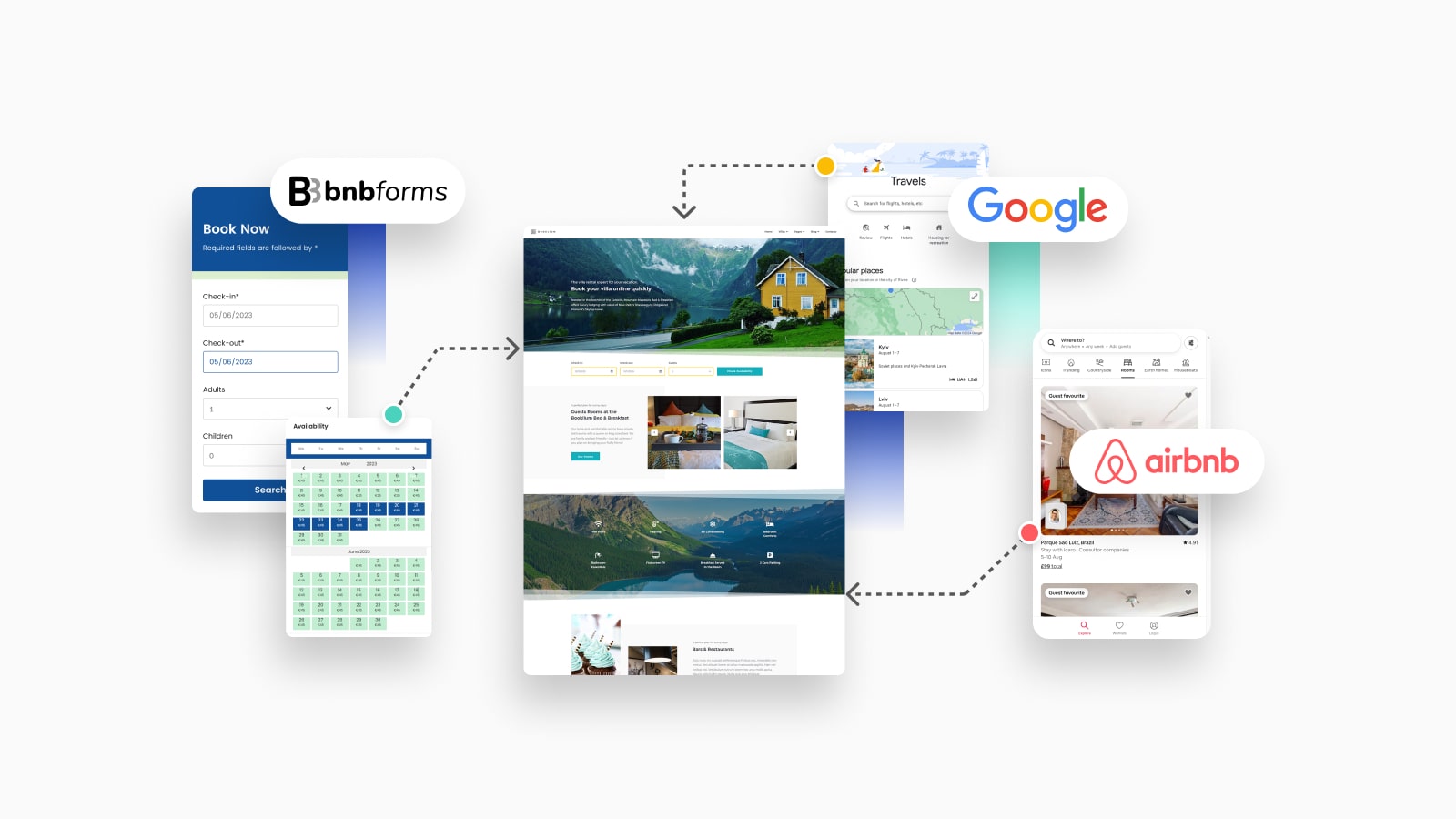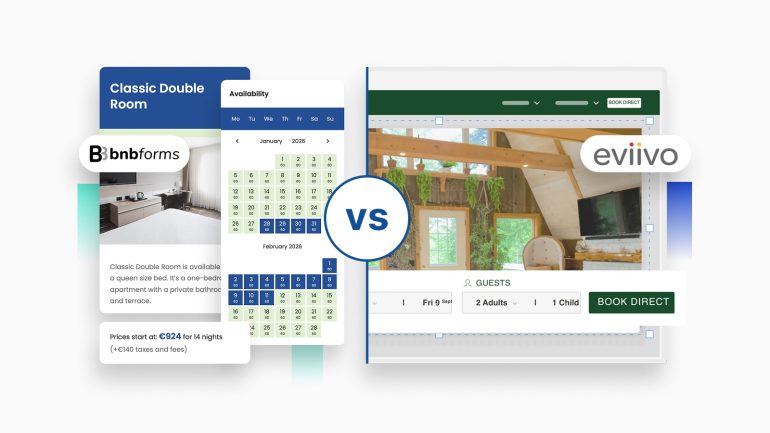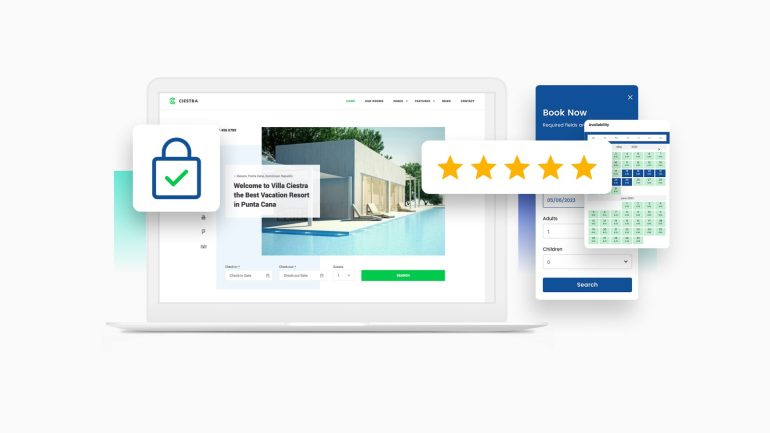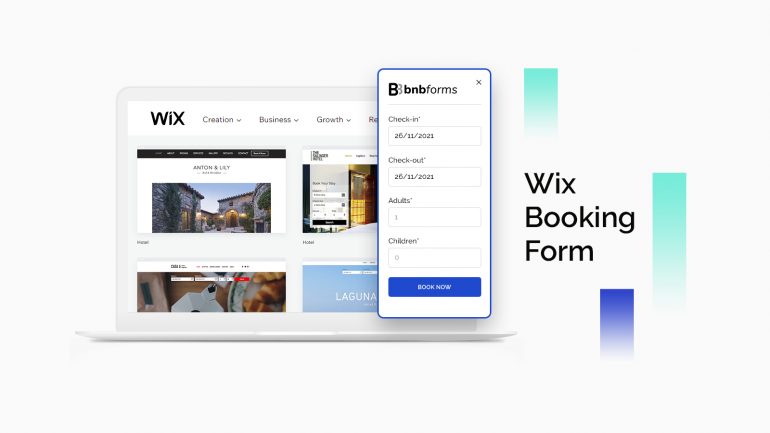Have you ever wanted to create a direct booking short-term rental website but didn’t know where to start? Fret not as in today’s post we’ll go through the process of building such a website step by step. You may be an experienced Airbnb host or a beginner who wants to have a user-friendly space for managing all your bookings. With a well-developed STR booking website, you can manage your accommodations, scale your business, and automate routine scheduling tasks.
The Benefits of Direct Booking

Before we look at what it takes to develop a direct booking website, let’s learn more about the benefits of such a site first. A well-designed and properly developed online presence for direct bookings can help you manage every aspect of property rentals without depending on costly third-party platforms. You can launch a booking platform without any hidden algorithms and fees with your own rules and regulations. Aside from controlling every aspect of the booking process, there are other advantages you may enjoy:
- Higher profit from reservations (you don’t pay commissions to a third party);
- Flexible pricing for your clients & guests;
- Perfect for a scalable vacation rental business;
- Best choice for brand development;
- Improved communication.
As you see, having a direct booking short-term rental website is beneficial in a lot of ways. Whether you are planning to increase your profits from reservations or to improve your marketing & branding, all of that and more can be done with a dedicated website. Additionally, it is more comfortable for you as a host to manage all reservations and other aspects of vacation rental in one place.
Direct Bookings with a BNBForms Widget – Quick Way
If you already have a website on any platform, this simple tutorial is for you.
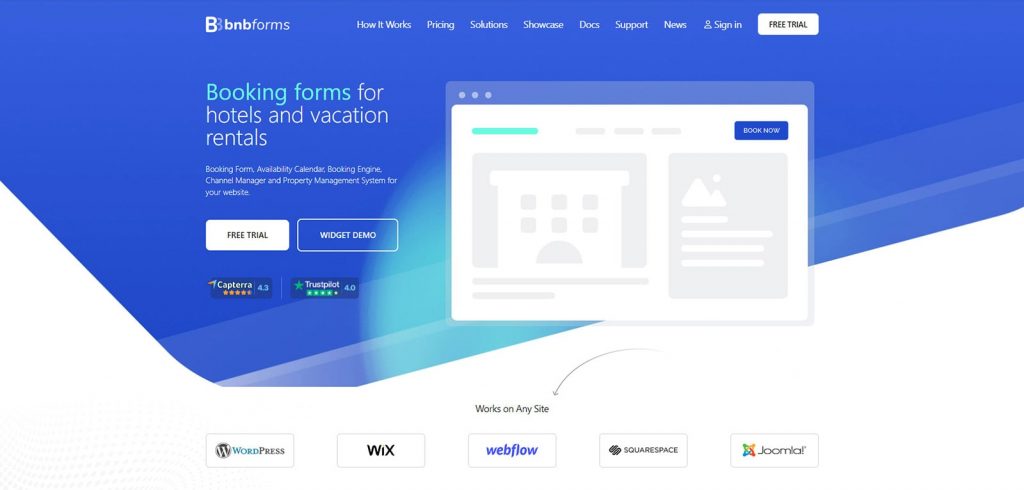
Developing a direct booking short-term rental on WordPress takes certain preparation. Moreover, it relies on diverse WordPress solutions, such as themes and booking plugins. Some of the latter may be quite costly, especially if you are just starting direct booking and want to avoid unnecessary spending. In this case, using an external booking system with a user-friendly integration is recommended. A great example of one is BNBForms, which works on any type of site, not just WordPress (Wix, Squarespace, etc.).
Offering diverse features ranging from accommodation type management and booking analytics to a customizable booking form, BNBForms provides everything a short-term rental direct booking website needs at an affordable price. You can easily integrate this booking system with a simple widget in a few steps, regardless of the website platform you use. For example, here’s a small guide on how it can be done on a WordPress-based website:
- Create a free account with BNBForms.
- Configure the main settings (add accommodation types, rates, payment gateways, etc.)
- Navigate to the “Widget Script” menu in the BNBForms dashboard and copy the booking widget code.
- On your WordPress, install a free Head & Footer Code plugin that allows you to integrate custom code into the header or footer.
- In your website’s dashboard, open the Head & Footer Code plugin interface and add the copied widget script into the HEAD code section. Then, save the changes you’ve made.
- Finally, open your WordPress booking website. You will see that the “Book Now” button appears in the website’s header.
- Click the button to check how the booking widget works.
But if you are new to the process and don't have any site, go to our step-by-step guide below.
📗 Free resources: How to Create an Airbnb Welcome Book [+Free Template]
How to Create a Direct Booking Short-Term Rental Website?

Now that we’ve explored the advantages a short-term rental direct booking website has, let’s move on to the steps needed to establish it.
First, note that multiple ways exist to create a website that will satisfy your and your guests’ needs. You may hire a web development specialist or create a site using a visual page builder.
Another possible path is to use WordPress and a pre-designed theme for vacation rentals. In this guide, we’ll use this CMS as an example to show you how to easily develop a booking website for your STR business without exceptional investments.
It involves the following:
- Hosting & domain services;
- WordPress themes & plugins;
- Online payment gateways;
- Website customization;
- Channel management.
Step 1. Register a Web Hosting Account

Any website starts with a hosting account registration. If you wish to have a website for direct booking vacation rentals with full control over every aspect, it’s essential to start with a trustworthy hosting provider such as Kinsta or Bluehost. When picking a hosting service pay attention to not just pricing options but also integrated security measures. Other necessary factors include:
- Performance;
- Customer support;
- Secure connection;
- Availability of the latest web technologies (PHP, MySQL);
- Easy-to-use control panel.
📊 Compare: Lodgify vs BNBForms Vacation Rental Booking Software Comparison
Step 2. Buy a Domain Name

No website is possible without a memorable domain name. It serves as an address for your direct booking short-term rental website. Choosing the right domain address is highly important as it will help you establish your brand in the future. Besides choosing a memorable name, we recommend following these tips for your website address:
- Do research before registering a domain;
- Pick a unique domain name that represents your brand;
- Feel free to add keywords to your site address;
- Avoid numbers and symbols;
- Make sure your domain is easy to spell.
Step 3. Install WordPress

After getting a hosting account and domain name, it’s time to install WordPress. The process is quite simple. All it takes to have the CMS running is to download the latest version of it and unpack the files to the FTP server of your hosting account. Note that you’ll need to specify some details first:
- MySQL database name, host address, user, and password;
- Website name;
- Username & password for administrator;
- Your email address.
Step 4. Get a Theme for a Short-Term Rental Website
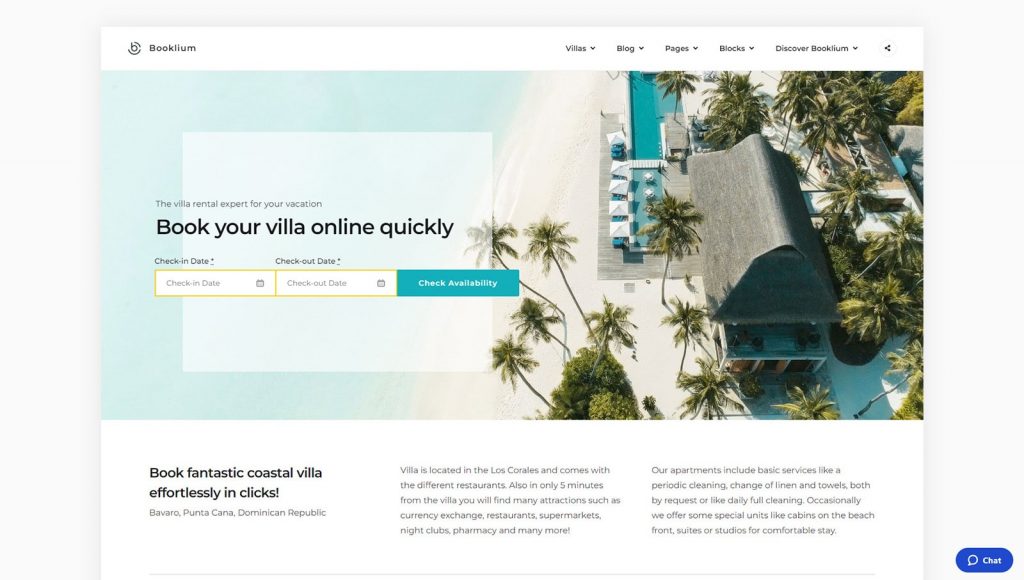
When WordPress is installed and operational, you’ll need to get a theme for your direct booking short-term rental website. Choose a theme based on the features you plan to add to your site and its design. For example, here’s what a modern vacation rental website requires:
- Booking calendar & a customizable booking form;
- Support of online payment systems;
- Pages for your rental properties;
- Integrated blog;
- Synchronization with popular OTAs.
These are only some of the functional advantages you can find in modern WordPress themes for STRs. With modern solutions, such as those by MotoPress, a WordPress expert in this field, it is possible to set up a website for your rental property quickly. However, before your website can be made public, you’ll need to configure it.
Step 5. Install & Activate a Booking Plugin
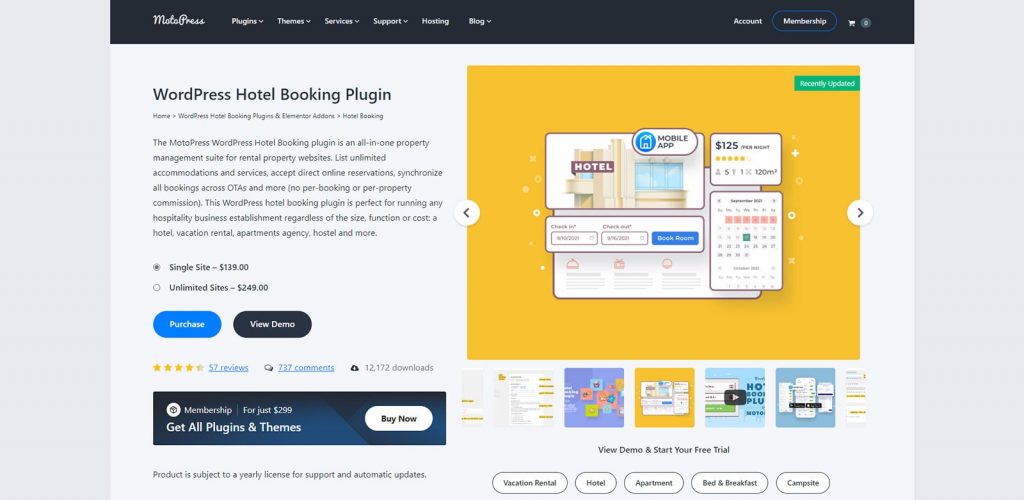
When it comes to setting up your direct booking short-term rental website, there are some things that need to be done in the first place.
For example, you’ll need to install a plugin for reservation management of your choice or use the one supplied with a chosen theme. Alternatively, you can integrate an external booking system, such as BNBForms, then you don’t need any extra booking plugins within WordPress.
Any of the abovementioned options will allow you to:
- Manage all your bookings in one place;
- Make your property rental services easily accessible;
- Automate routine processes;
- Accept online payments for direct bookings;
- Avoid unwanted errors.
Step 6. Add Property Details
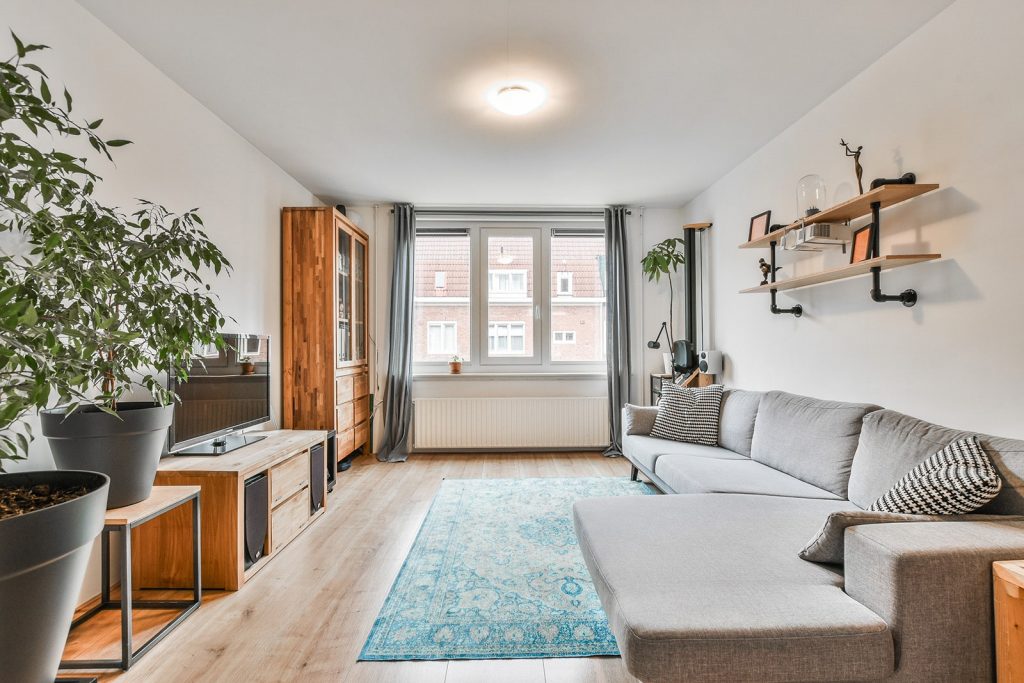
No matter which way you choose to integrate booking options, you may want to add property details to your direct booking website for short-term rental.
This includes various details about your property, including room rates and other key features. Besides, it is required to add some details to the booking system about the property location and nearby places of interest or activities. In WordPress, you can do this by adding new pages through a dashboard or by editing existing property page layouts. Don’t forget to add the following:
- Descriptions for rooms & property;
- Room types & categories;
- High-quality photos and videos;
- Detailed descriptions of available amenities
- Tips for first-time visitors.
Step 7. Set Property Rental Rates

One of the key steps that can’t be missed in your direct booking short-term rental website is all about room rates. Many plugins & solutions provide simple yet effective tools for setting your property pricing. If you have already added property details, you’ll also need to specify them in the dashboard using the preferred booking plugin. Alternatively, you may add this information to BNBForms and connect the platform to your website (keep reading to find out more about it). Advanced booking plugins usually offer the following rate management features:
- Different prices for adults and children;
- Seasonal rates;
- Taxes and additional fees (if necessary);
- Coupons & discounts;
- Prices for extra services.
Step 8. Create an Online Payment Account
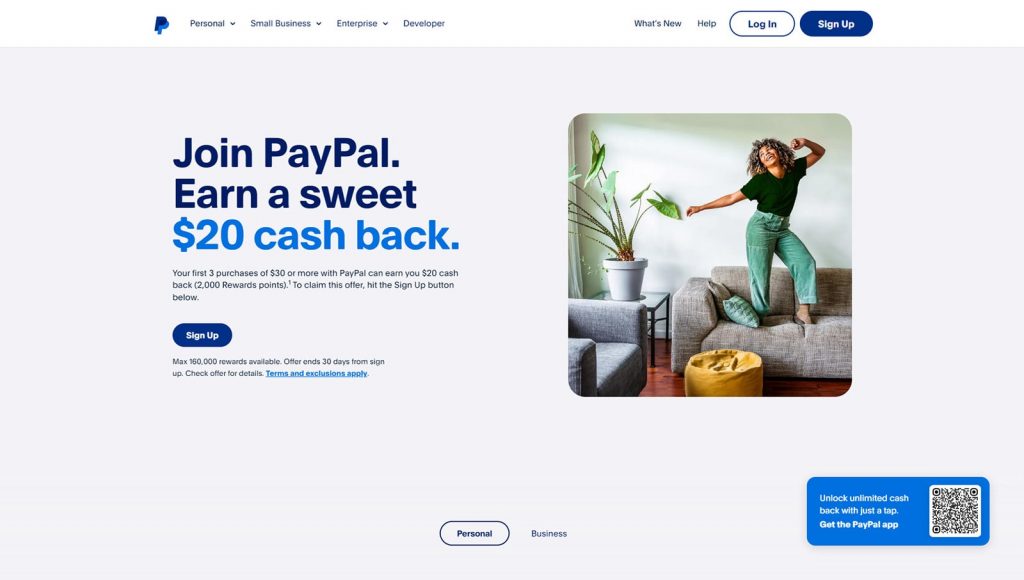
If you want to make your direct booking vacation rentals website even more comfortable for your soon-to-be guests, enabling online payment functionality is necessary. BNBForms as well as accommodation booking plugins allow easy integration of such payment gateways as Stripe or PayPal. This helps guests to pay for a room in one click. As a host, you’ll be able to easily accept card payments without needing to confirm payments manually. When registering a new account in an online payment service, you’ll need to specify key information:
- Your type of business & business address;
- Bank account information;
- Website address;
- Social media address.
Step 9. Add Payment Methods to Your Website

After registering an account with an online payment gateway and making other important preparations, it’s time to add common payment methods. They vary from traditional on-site payments to credit cards and online payments. Additionally, in many booking plugins, there is an option that allows you to enable deposit payments. This helps a lot when your customers can’t make the whole payment right away. Having varied payment methods for your direct booking short-term rental website helps to:
- Speed up the payment process;
- Improve security;
- Increase customer satisfaction;
- Reduce fraud possibility.
Check out which payment gateways are available by the booking software you choose.
Step 10. Synchronize Existing Bookings with Your Website
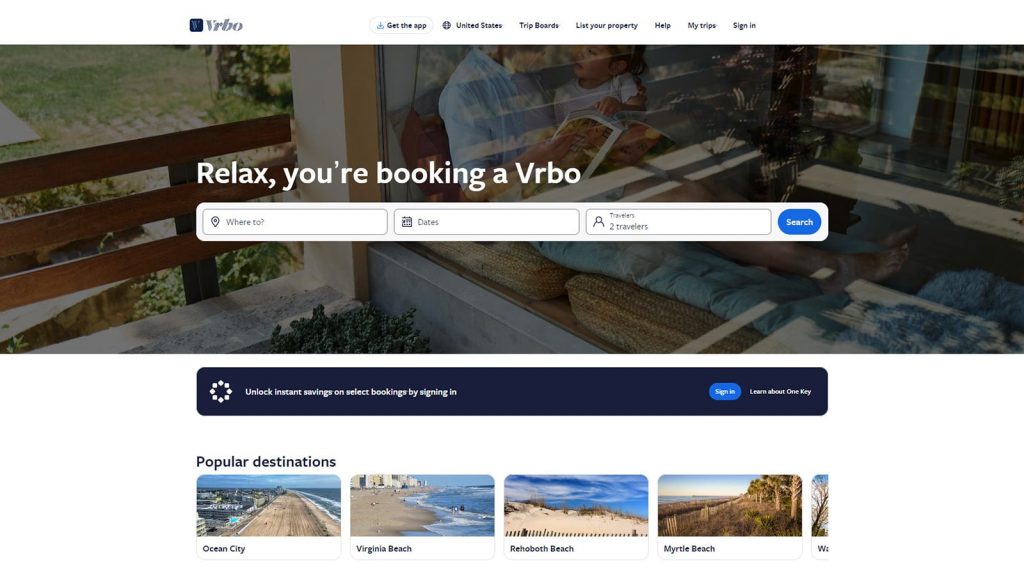
One of the final steps after setting up your short-term rental direct booking website is connected with syncing your bookings. If you provide bookings via popular online platforms, it is necessary to configure the channel manager to avoid double bookings. This feature is common for many vacation rental WordPress plugins & themes. It helps you to sync your booking calendars via platform API or by importing calendars to your website. As a result, you’ll be able to see all bookings on your website without having to manage several accounts at once. A channel manager supports many popular OTAs:
- Airbnb;
- Booking.com;
- VRBO;
- Google Travel;
- TripAdvisor.
Check out how the channel manager works in the booking software you choose.
Conclusion

A direct booking short-term rental website is certainly a useful tool for managing vacation rental bookings. Besides, with WordPress and its numerous ready-made themes and plugins, creating a flexible and professionally designed booking website can be easily done. Moreover, with modern booking service platforms, such as BNBForms and Hospitable Direct Booking, you can add even more useful booking potential to your website by integrating their booking systems and other useful features. No matter what you choose, having a direct booking website will help you save time & money as well as manage your reservations in one place. Other useful benefits include:
- Direct communication with clients: With a dedicated direct booking website for short-term rental, you can easily stay in touch with your guests and soon-to-be clients using various solutions that WordPress provides alongside third-party integrations.
- Improved control over the booking process: A direct booking website allows you to control the reservation process without any limits. From a customized booking form to accessible payment methods, there are various ways you can use to ensure the best experience for your guests.
- No unwanted fees: Unlike third-party booking platforms, an established STR website doesn’t have any hidden fees and subscriptions. You only pay for what you need – be it hosting and domain services or premium plugins and themes.
- Better SEO: Lastly, a direct booking website gives you all the leverage to rank higher on Google. Due to many advanced and popular WordPress-friendly SEO solutions, your website can be enhanced with optimized content and improved performance in no time.
